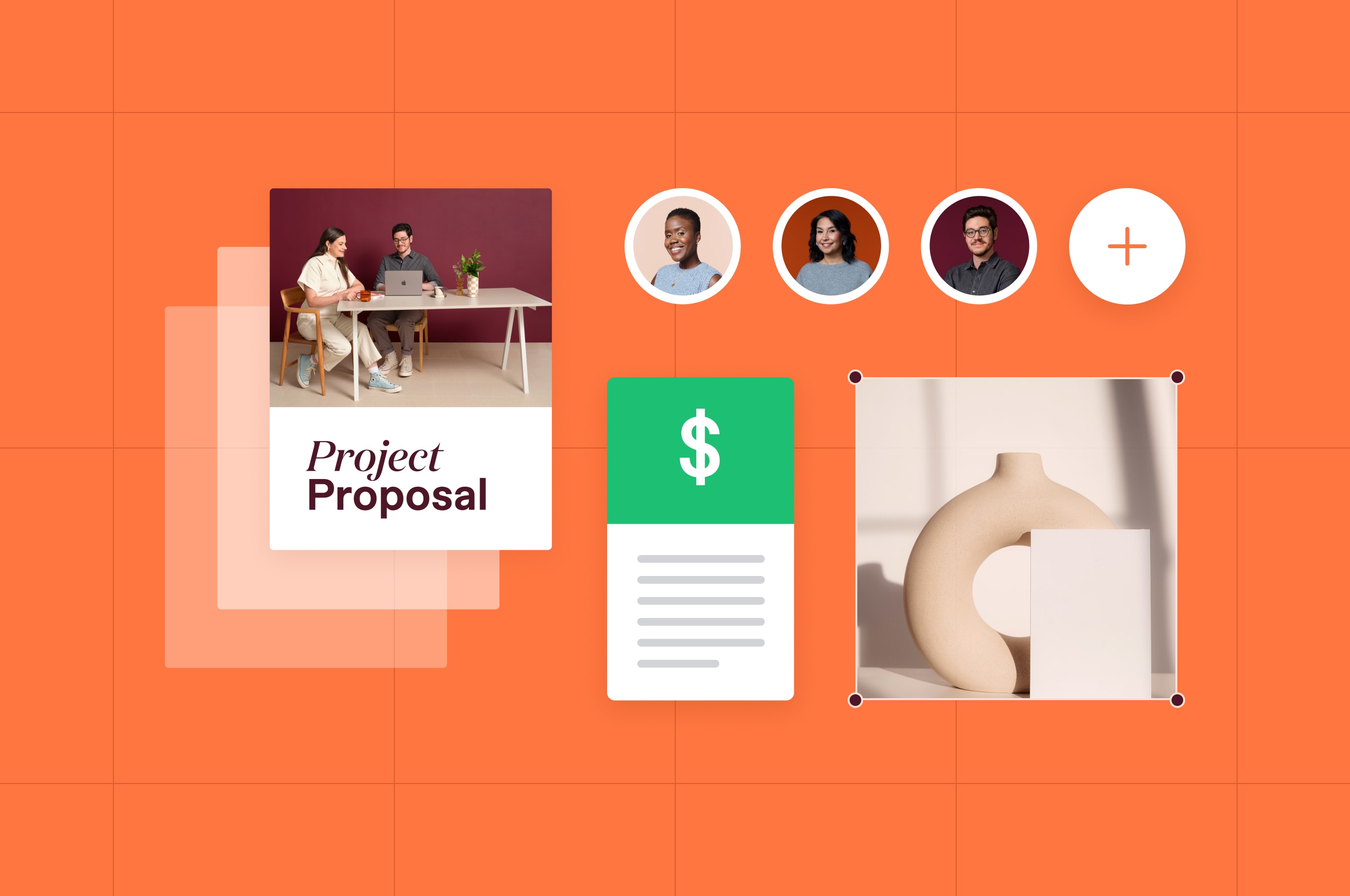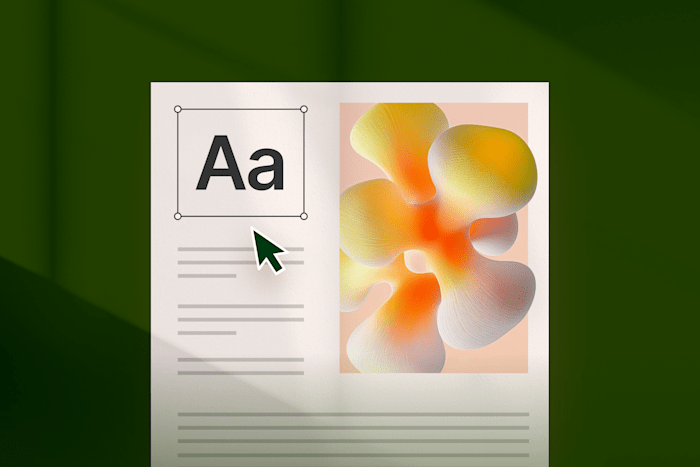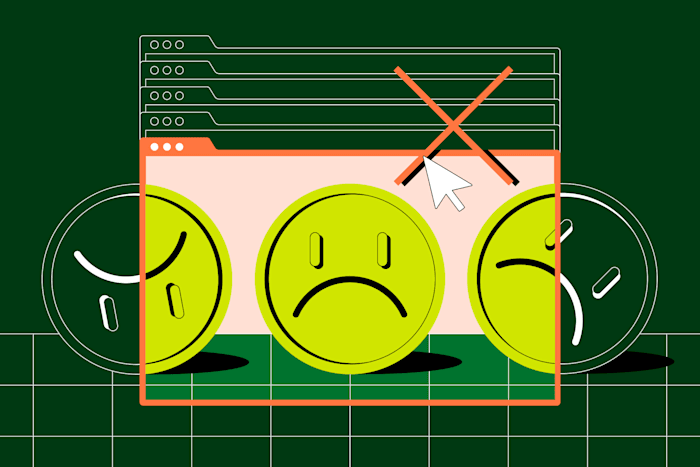Corporate Website Design: The Complete Guide for 2025
This guide covers key design elements, technical essentials, and expert insights, with examples to help you craft a professional online presence that showcases your brand.
 March 3, 2025
March 3, 2025 12 minute reading
12 minute reading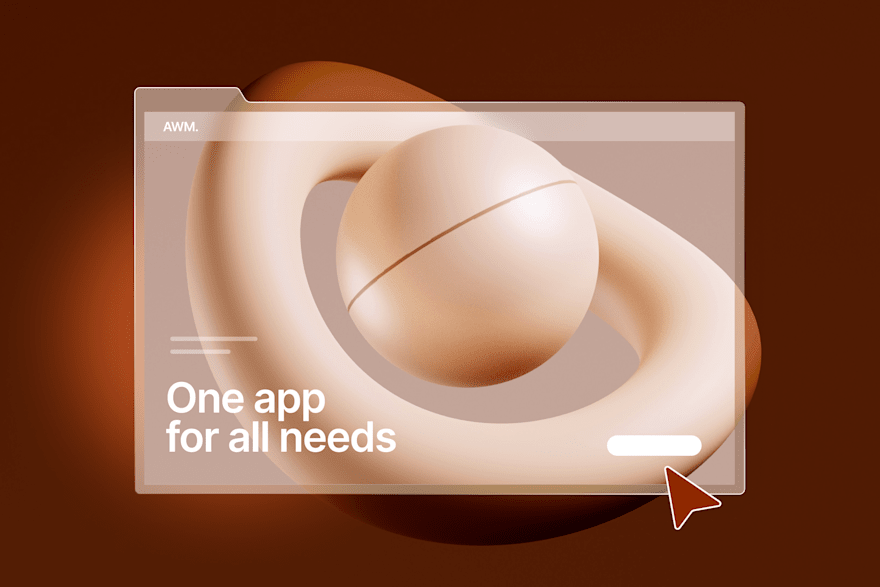
Your website is the first place potential customers will go to learn more about your company and your products. It’s also the link they’ll share with their friends and families once they become fans of your brand.
So, your website design is not just about looking good online. It’s an essential sales and marketing tool that can help or hurt your business.
In this article, we’ll cover everything you need to know to build an outstanding corporate website.
Why a well-designed corporate website matters
A study done by Taylor & Francis found that you have about 50 milliseconds to make an impression with your website — for good or bad.
Your website design can either turn off customers and cause them to seek out a competitor, or capture their interest and leave them begging for more.
Here are are other reasons why having a well-designed corporate website matters for your business:
Establishes credibility and trust: A professional site immediately signals credibility and competence to visitors. It tells them that you take your business seriously and care about their experience. No customer is going to give a site their personal information when the design of the site doesn’t look trustworthy. A G2 survey found that 48% of users see website design as the top factor in a business’s credibility.
Enhances brand awareness: Your website serves as a 24/7 brand ambassador, consistently communicating your company's values, personality, and expertise. All your design choices — from color schemes to typography — help build a memorable brand identity that you want to resonate with your target audience.
Facilitates customer engagement: Your website also engages visitors 24/7. A well-designed site can anticipate and address visitor’s needs. So, even if someone is researching your services at 3 AM, looking for contact information, or trying to make a purchase, good design ensures they can accomplish their goals. With features like contact forms and live chat, you can have two-way communication, allowing you to understand and meet your customers’ needs.
Drives sales and conversion rates: When designed with clear user pathways and strategic calls-to-action, your website becomes an important sales tool. It guides visitors through the customer journey, from initial interest to final conversion, working around the clock to grow your business.
Showcasing products and services: Your site also allows you to provide detailed descriptions, images, and even customer reviews of your products and services, all in one place. This helps visitors make informed decisions and makes it convenient for them to become one of your customers.
Offering cost-effective marketing: Before you spend thousands of dollars on social media ad campaigns and online ads, your website is a budget-friendly way to market your goods and services. It’s the central hub for all the information related to you and your brand, so making it look professional and reflective of your brand’s identity is an easy way to market to your customers.
Providing a competitive edge: Over 1.1 billion websites exist today. So designing yours well is critical if you want your brand to stand out.
Key features of an effective corporate website
Along with looking good, your website must be functional and make sense for your business. Here are some key features that will make your website more effective for both you and your customers:
Clear navigation: Clean, intuitive navigation with logical menu structures and clear labels helps visitors find what they’re looking for and explore your site easily. You want to make the experience of using your website a convenient and pleasant one. You don’t want them to leave your site feeling frustrated.
Mobile-first: Over 47% of web traffic in the US comes from mobile devices. So if you want to capture that market, you need to make sure your website is also mobile friendly. That means, not only making it fit on any screen size, but also having touch and swipe capabilities built into your site.
Strong visuals and branding: The visual elements on your website should tell your brand's story at a glance. Make use of your brand’s logo, color scheme, font, and strong images — they make people remember you. Everyone knows the golden arches against the red backdrop, the interlocked Cs on perfume and handbags, and the apple with the bite out of it. Imagery is powerful — use it.
Performance: The internet has made us all value efficiency and speed. You don’t want customers to wait for your website to load — that’ll just cause them to leave your site for one where they don’t have to wait. Make sure to optimize everything on your site, from images, to server response times, and maybe even offer a stripped-down version of your site so you can reach demographics with weak or spotty internet connectivity capabilities.
SEO integration: The best website in the world is useless if no one can find it. Smart SEO integration helps your site appear in search results when potential customers are looking for your products or services. This means thoughtful keyword usage, well-structured content, and technical optimization that search engines love.
Security: Website security is not optional. Nothing will erode the trust of your customers more than finding out you had lax cybersecurity or were not transparent about how you were using the information they entrusted to you. SSL certificates, regular updates, and strong firewalls are some ways to protect your customers’ information.
Accessibility: If customers can’t access your website, all the work you put into it will be for nothing. According to the Disability and Health Data Systems report, 1 in 4 adults (70 million people) have reported having a disability in the US. That means adding features like screen reader compatibility, large font options, and even video subtitles will create an inclusive space for all potential customers.
Expert tips for designing a corporate website
Now it’s time to start designing your website. Before diving right in, ensure you have a clear roadmap to prevent you from losing your way. Here are some tips to keep you from getting overwhelmed:
Define goals and audience
Before deciding on colors, layouts, and fancy features, understand exactly what you want your website to achieve and who your target audience is.
When it comes to deciding on goals, be specific. Are you looking to generate leads? Build brand awareness? Provide customer support?
The more specific you are in the goals you want to achieve, the easier it is to decide what features to include and what aspects to prioritize in your website build.
For example, here’s how to shape your design based on the following goals:
Lead generation & sales: Use bold calls-to-action, persuasive copy that speaks directly to your audience’s pain points, and frictionless contact forms that make reaching out effortless.
Brand building: Craft a compelling brand narrative, maintain a cohesive visual identity, and highlight your company culture and values to create emotional connections with visitors.
Customer support: Build trust with a comprehensive knowledge base, prominently displayed contact options, and instant help through live chat or automated support tools.
Showcasing products or services: Capture attention with detailed product descriptions, stunning visuals, and transparent pricing that makes decision-making easy for your customers.
You can have multiple goals, but it's important to prioritize them to guide your design decisions and stay within your budget.
Next, consider who is going to use your website. Here are some key questions you can ask to figure that out:
Who are your ideal visitors? Think beyond basic demographics like age and location. What are their challenges? What solutions are they seeking?
How do they typically interact with websites? Are they primarily mobile users? Do they prefer reading detailed content or watching videos?
What actions do you want them to take? Potential actions should influence your design, whether purchasing, filling out a contact form, or downloading a resource.
Pro tip: Create user personas, which are detailed profiles of your typical visitors. These aren't just made-up characters. They're research-based representations of your audience that help guide design decisions.
Also, remember, this isn't a one-and-done process. As your business grows and evolves, your goals and audience might shift too. Regular review and adjustment of these questions ensures your website continues to serve both your business and your users as you both grow.
Find a Web Designer for Hire
Prioritize user experience (UX)
A good corporate website is engaging and easy to use. According to a study conducted by Baynard and eMarketer, 88% of online consumers are less likely to return to a site after a poor user experience. Just think, making your website a little easier to navigate could potentially increase your sales by over 80%.
First and foremost, make it easy for your customers to find what they’re looking for and get what they need. Here’s how:
Descriptive menu labels: Use clear, specific terms that guide users effortlessly.
User-friendly navigation: Organize menus logically for easy browsing.
Search functionality: Add a search bar for quick, direct access to content.
People do a lot of shopping and browsing on their phones and mobile devices, so:
Make sure your site works on smartphones and tablets: Ensure seamless functionality on all mobile devices.
Use touch-friendly buttons and forms: Design with easy tapping and swiping in mind.
Optimize loading times for mobile connections: Speed up your site for users on the go.
Test across different devices: Check compatibility to deliver a consistent experience everywhere.
A slow site is going to lose views and slow web traffic. Make sure to:
Optimize images and compress files: Improve performance by reducing file sizes.
Minimize loading times: Every second counts for keeping users engaged.
Ensure smooth transitions and responsive interactions: Create a seamless browsing experience.
Regularly test for broken links or issues: Keep your site error-free and user-friendly.
Make sure your site is accessible to everyone — especially people with disabilities. Here’s how:
Provide alt text for images: Make content accessible to screen readers and visually impaired users.
Ensure keyboard navigation works well: Allow users to navigate your site without a mouse.
Use sufficient color contrast for readability: Improve visibility for users with visual impairments.
Offer stripped-down versions of your website: Support users in areas with spotty or unreliable internet access.
Lastly, make sure to test your site regularly, gather feedback, and make changes/improvements as needed. UX isn't about following trends — it's about understanding your users' needs and creating an experience that serves them effectively. When users enjoy using your website, they're more likely to engage with your content, trust your brand, and become loyal customers.
Use analytics and data
Data can be your best friend when designing a corporate website. Rather than relying on gut feelings or blindly following trends, analytics provide real insights into what your users want and how they behave.
Website analytics shows you which pages your customers love, where they get stuck, and even when they decide to leave. This information is gold for making smart design decisions. Track things like:
Bounce rate: How many visitors leave after viewing just one page? A high bounce rate might mean your content isn't connecting or your design isn't inviting.
Time on page: Are people sticking around to read your content, or are they just skimming?
User paths: How do visitors navigate through your site? This helps you understand if your menu structure makes sense.
Device usage: Are most of your visitors on mobile? Desktop? This shapes how you prioritize different screen sizes.
These numbers are essential, but remember they reflect human actions for human reasons. That spike in exits on your contact page? Maybe your form is too long. The drop in mobile engagement? Perhaps your buttons are too small for comfortable clicking. Make sure to translate all your data into actions to serve your customers better and positively impact your business.
Pro tip: Don't get overwhelmed by all the available data. Focus on metrics that align with your business goals and make incremental improvements based on what you learn.
Iterate through feedback
Building a great corporate website is an ongoing journey of improvement driven by feedback. Think of your website as a conversation with your users. Just like any good conversation, it needs to be two-way. Feedback helps you understand what's working, what isn't, and what your users need. Without it, you're just talking into the void.
That’s why creating opportunities and avenues for potential and current customers to offer you feedback is invaluable. There are several ways to get that information:
Direct feedback: Surveys, feedback forms, and chat interactions give you straightforward insights from users.
Behavioral data: Watch how people use your site through tools like heatmaps and session recordings.
Support queries: Your customer service team often hears about website pain points first.
Internal input: Sales and marketing teams can provide valuable perspectives on what customers say.
Once you get your customers' questions, concerns, and praise, it’s time to act on it. Test out different solutions and monitor the results. Then, rinse and repeat. This will help you fine-tune your website, grow your business, and deepen your relationship with your customers because they’ll feel seen and heard.
Pro tip: Don't try to please everyone with every piece of feedback. Focus on changes that align with your core audience's needs and your business objectives.
Inspiring corporate website examples
We’ve talked a lot about the importance of a well-designed website and the elements to include, but what does that actually look like? Here are some real-life examples of corporate websites to help inspire your design.
Tuskar Safety Footwear made by Fiverr designer Renu S
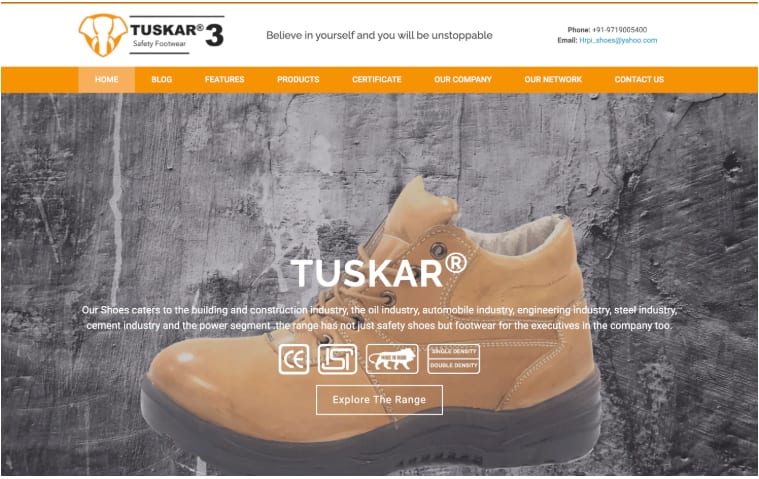
Tuskar
Fiver designer Renu S chose a rugged aesthetic to highlight the toughness of the Tuskar boots.
Straightforward font and menu choices make it easy to find exactly what you’re looking for and makes it clear that these boots are here to work for you.
Plus, Renu S took advantage of highlighting the Tuskar Brand with not just the logo but also their motto, “Believe in yourself and you will be unstoppable.” This is easy to see as it’s placed top and center.
Find website design services on Fiverr today
Haute Butch made by Fiverr designer Hanan A.
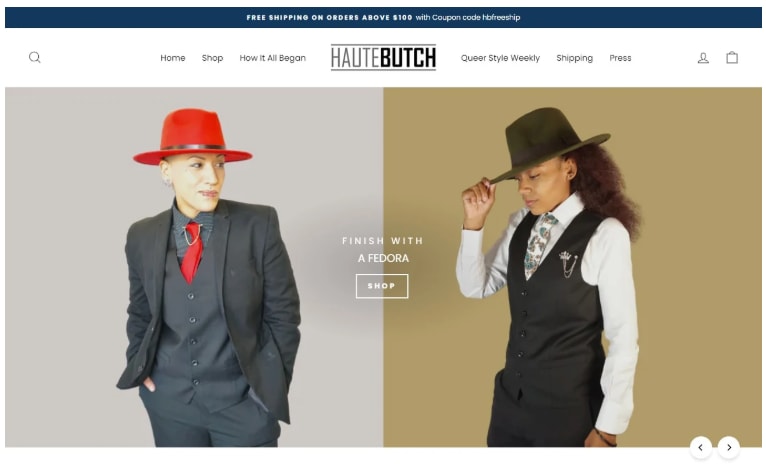
HauteButch
The Haute Butch site is creative and perfectly captures the brand’s vibe. Hanan A. kept it simple but still took advantage of the Haute Butch logo and used striking photos to mirror the logo — splitting the landing page. The photos are not just eye-catching. They also show off the Haute Butch culture and products.
Champagne Environmental Energy Solutions made by Fiverr designer Nuralam Ziko

Champagne
The Champagne website is an excellent example of a site for a company that doesn’t deal with physical products. That can be a challenge since a website is a very visual medium. But Nuralam Ziko tackled this well and created something professional and engaging.
Ziko chose to greet visitors with a bold CTA, “Work with the best team in the Gulf of Mexico.” This is placed in front of rotating videos of various scenes throughout the Gulf of Mexico area. He even gives potential customers a way to know the names of the Champagne ships by adding the “See Our Fleet” button.
Pro tip: Remember, if you need help with design, you can find a graphic designer or website designer on Fiverr.
Costs of corporate website design
Website development has various factors that can affect your final price tag. These factors include design complexity, content creation, ongoing maintenance, and hidden expenses. Let's break down what really goes into pricing a corporate website and how to budget effectively for both immediate and long-term needs.
Factors affecting costs
Prices for corporate website design can vary significantly, but understanding what factors are involved in designing your website can help you budget effectively and get the most bang for your buck.
Basic informational websites with template-based designs are the most budget-friendly option. However, incorporating custom designs, interactive features like booking systems, or advanced functionality like member portals will increase costs. Content creation— including professional copywriting, custom photography, and video production—also adds to the overall price, so it’s important to factor these elements into your budget and planning.
On the technical side of things, the Content Management System (CMS) you choose largely determines the capabilities of your website. It includes things like your security features, SSL certificates, hosting, and third party integrations. Depending on your website needs, you may want to put a big chunk of your budget into getting the CMS you want.
The development team you choose will also be a bigger part of your budget. Freelancers typically charge less than agencies, and rates can vary significantly based on location (with U.S.-based developers generally commanding higher rates than offshore teams). If you need help with UX design or security experts, that expertise will add to the overall cost but might be worth the investment.
Cost ranges
Whether you're working with a tight budget or planning a major investment, understanding typical cost ranges helps you plan and prioritize what you really need. Below are the typical price ranges depending on the size of the website build.
Small businesses and startups can usually do pretty well with a simple template website. It’s budget friendly, usually has some basic customizable elements, and has all the essential pages. Software like Wordpress also have basic contact forms and social media integration built-in.
Custom designs and ecommerce websites are ideal for small businesses that are scaling up and need more advanced functionality. These websites typically include custom design work, additional pages and content, basic SEO, mobile-friendly layouts, and interactive features to enhance user experience.
Enterprise-level websites involve fully customized design and development throughout the site, usually with complex functionality like ecommerce platforms, member portals, and booking systems. Comprehensive SEO and online marketing tools are built-in, along with advanced integrations with the other systems of your business. Plus, it will include enterprise level security and optimal performance.
One note, these are general cost ranges. Your specific needs might push costs higher or lower. But it can be worth investing in quality upfront to avoid costly rebuilds later. The key is matching your budget to your actual needs. Not every business needs a high-end custom solution, and sometimes a simpler website can serve your goals just as effectively.
Hire a web designer on Fiverr
Hidden costs to consider
The upfront development costs are not the only thing you have to consider when building your website. Once your site is built, you need to fill it with content.
Professional copywriting: $50-200 per page
High-quality images: $10-100 each for stock photos, or $500+ for custom photography
Regular content updates to keep things fresh: Varies based on frequency and scope
Video production: $500-5,000+
The technical side adds another layer of expenses. If you want to keep your data and your customer’s data safe and keep functionality up, you’ll need to invest in things like:
Premium plugins and integrations: $10-200 annually per plugin
SSL certificates for security: $10-500 annually
Analytics tools beyond the basics: $50-500 monthly
CRM or marketing tool integrations: $500-5,000+
On top of all this, you need to make sure to properly maintain your site. If your website crashes or isn’t up-to-date on legal compliance, that could end up costing you sales or heavy fines as well as losing the trust of your customers.
Regular website maintenance: $50-200 monthly
Regular security and install updates: Varies
Bug fixes and troubleshooting: $50-200 per hour
Periodic design refreshes every 3-5 years: $5,000-20,000
Privacy policy and terms of service: $500-2,000
Accessibility compliance: $1,000-10,000
GDPR and privacy law compliance: $500-5,000
Think of these hidden costs like maintaining a car. There's the initial purchase price, but you also need to factor in fuel, insurance, maintenance, and unexpected repairs. Planning for these costs upfront helps you avoid budget surprises down the road.
Hire designers at Fiverr to build your corporate website
Unlocking the power of corporate website design is essential for establishing a strong online presence.
For professional assistance with your corporate website design needs, consider using Fiverr to find talented and knowledgeable experts. Let your website reflect your company's excellence and watch it elevate your online presence to new heights.
Ready to hire the right freelance web designer for your corporate website? Sign up for Fiverr today.
Corporate website design FAQs
What is the typical cost of a corporate website?
The cost of a corporate website typically falls into three main ranges. Basic websites with essential pages and features usually cost between $1,000-$5,000. Mid-range sites with custom website and graphic design and more functionality range from $5,000-$20,000. High-end custom websites with complex features and integrations can cost $20,000-$100,000+.
But these are just ballpark figures. Your actual cost will depend on factors like design complexity, number of pages, custom features, graphic design work, and whether you work with a freelancer or agency.
How long does it take to design and launch a corporate website?
Creating a corporate website usually takes around 1-4 months, depending on your project's complexity. A basic informational website might take 4-6 weeks, while a complex custom site with advanced features could take 3-4 months or longer.
Again, things like the number of pages, custom features, content creation needs, and your team's ability to provide timely feedback and approvals will affect how quickly your site is completed.
Do I need a custom website or a template-based solution?
Choosing between a custom website and a template-based solution depends on your business needs. Custom websites make sense when you have unique functionality requirements, need specific brand differentiation, or have complex integration needs that templates can't handle. However, they require larger budgets, longer website development times, and ongoing maintenance. Consider starting with a template and customizing it as your needs grow — this gives you the best of both worlds.

